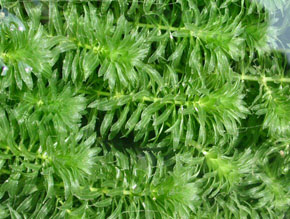
Cyanobacteria coloring the water.
You may have noticed a green scum drifting on the lake surface recently or seen loads of green particles suspended in the water and thought it was pollen. Well, it does look a lot like the pine pollen that was blowing around last week, but that was yellow, and this stuff is green. Clary Lake is actually experiencing moderate blue-green algae growth resulting in an algal bloom. This early season algae bloom has no doubt been fueled by excessive runoff from all the rain this spring (15″ since the 1st of April!) which has introduced Phosphorus and other nutrients into the lake. Phosphorous is the primary food for plants and algae. Blue-green algae technically is a phylum of bacteria (cyanobacteria) that obtain their energy through photosynthesis. Another likely source of Phosphorus is rotting terrestrial vegetation. For years, better than 300 acres of drained wetlands have been growing grass, goldenrod, alders, and other terrestrial plants and that land is now under water, and the vegetation is rotting. This releases nutrients including Phosphorus in the water, helping to fuel aquatic plant and algae growth. Here are a few more photographs:
All this rainfall has also resulted in significant flushing of Clary Lake, well in excess of normal. Since January 1st, the lake’s entire volume of water (7,224 acre-feet) has been replaced almost twice. The inverse of the flushing rate is retention time (how long water stays in the lake) and that figure has decreased to about 92 days. The published “flushing rate” for Clary Lake is 1.81 times per year. We’re going to exceed that value by a significant amount. This will help “wash out” the nutrients currently in the lake, but will also result in more nutrients being brought into the lake. This is why controlling non-point sources of soil erosion and sedimentation is So Important: it doesn’t help replacing nutrient-laden water with more nutrient-laden water.
I expect this current algal bloom to dissipate soon, and it remains to be seen if we’ll have additional algae growth this year. Under the circumstances, I wouldn’t be surprised. It is important to remember that even though the dam has been repaired and the lake level restored, the ecology of Clary Lake has been severely damaged as a result of the 8 years of low water and it going to take some time to recover. Clary is still at-risk from both natural and man-caused issues and deserves our ongoing attention.
 reversed oars and started to pull my boat away, Carolyn stood up and snapped this picture with her phone. It’s a great shot. You can clearly see the loon’s head and back. Very well hidden. The picture at left is a blow up of the original picture that Carolyn sent me, it clearly shows the loon’s back, head, and red eye.
reversed oars and started to pull my boat away, Carolyn stood up and snapped this picture with her phone. It’s a great shot. You can clearly see the loon’s head and back. Very well hidden. The picture at left is a blow up of the original picture that Carolyn sent me, it clearly shows the loon’s back, head, and red eye.

 And just in time too! I had meant to finish and post last summer’s Annual Meeting minutes long before this but with everything that’s been going on, I just lost track of that task.
And just in time too! I had meant to finish and post last summer’s Annual Meeting minutes long before this but with everything that’s been going on, I just lost track of that task. 





















 Just a reminder that our Ice Cream Social is this coming Sunday July 14th at 2 PM at the Clary Lake dam! The weather is looking perfect with temps in the mid-80s. Stop by and make yourself a Sundae! Bring a friend! We’ll have some tables and chairs set up, and some canopy tents so you can get out of the sun if you wish. Here’s a link to the original post about this event:
Just a reminder that our Ice Cream Social is this coming Sunday July 14th at 2 PM at the Clary Lake dam! The weather is looking perfect with temps in the mid-80s. Stop by and make yourself a Sundae! Bring a friend! We’ll have some tables and chairs set up, and some canopy tents so you can get out of the sun if you wish. Here’s a link to the original post about this event: In a move that defies understanding, Aquafortis Associates LLC (AQF) has decided to appeal the June 6th Board of Environmental Protection (BEP) ruling denying their appeal of the DEP transfer of the Water Level Order to the Clary Lake Association (see “
In a move that defies understanding, Aquafortis Associates LLC (AQF) has decided to appeal the June 6th Board of Environmental Protection (BEP) ruling denying their appeal of the DEP transfer of the Water Level Order to the Clary Lake Association (see “










 In a decision that should come as a surprise to no one, the
In a decision that should come as a surprise to no one, the  Just a reminder that the Board of Environmental Protection hearing on Aquafortis Associates LLC’s appeal of the DEP’s Transfer Order is tomorrow, Thursday June 6 at 9:00 AM at the Augusta Civic Center. This hearing is the result of an appeal filed by Richard Smith of Aquafortis Associates LLC back in
Just a reminder that the Board of Environmental Protection hearing on Aquafortis Associates LLC’s appeal of the DEP’s Transfer Order is tomorrow, Thursday June 6 at 9:00 AM at the Augusta Civic Center. This hearing is the result of an appeal filed by Richard Smith of Aquafortis Associates LLC back in 

